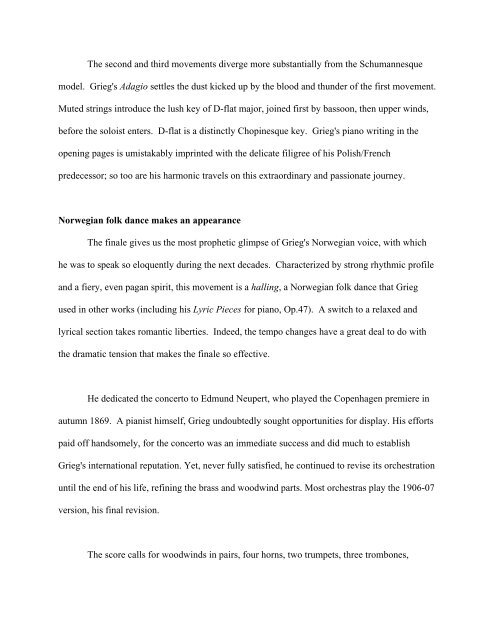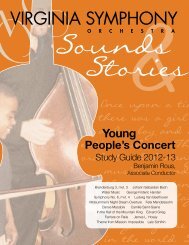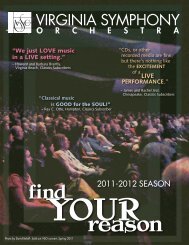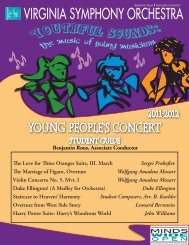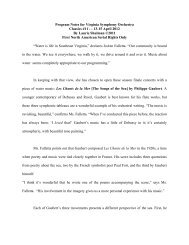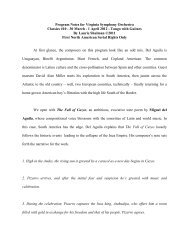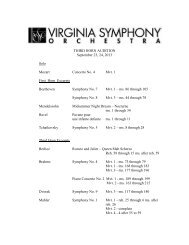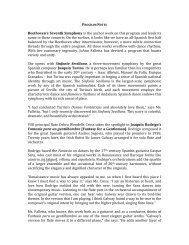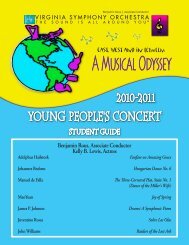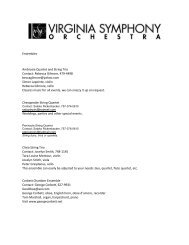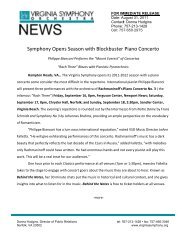Program Notes for Virginia Symphony Orchestra Classics #8 - 24-26 ...
Program Notes for Virginia Symphony Orchestra Classics #8 - 24-26 ...
Program Notes for Virginia Symphony Orchestra Classics #8 - 24-26 ...
You also want an ePaper? Increase the reach of your titles
YUMPU automatically turns print PDFs into web optimized ePapers that Google loves.
The second and third movements diverge more substantially from the Schumannesque<br />
model. Grieg's Adagio settles the dust kicked up by the blood and thunder of the first movement.<br />
Muted strings introduce the lush key of D-flat major, joined first by bassoon, then upper winds,<br />
be<strong>for</strong>e the soloist enters. D-flat is a distinctly Chopinesque key. Grieg's piano writing in the<br />
opening pages is umistakably imprinted with the delicate filigree of his Polish/French<br />
predecessor; so too are his harmonic travels on this extraordinary and passionate journey.<br />
Norwegian folk dance makes an appearance<br />
The finale gives us the most prophetic glimpse of Grieg's Norwegian voice, with which<br />
he was to speak so eloquently during the next decades. Characterized by strong rhythmic profile<br />
and a fiery, even pagan spirit, this movement is a halling, a Norwegian folk dance that Grieg<br />
used in other works (including his Lyric Pieces <strong>for</strong> piano, Op.47). A switch to a relaxed and<br />
lyrical section takes romantic liberties. Indeed, the tempo changes have a great deal to do with<br />
the dramatic tension that makes the finale so effective.<br />
He dedicated the concerto to Edmund Neupert, who played the Copenhagen premiere in<br />
autumn 1869. A pianist himself, Grieg undoubtedly sought opportunities <strong>for</strong> display. His ef<strong>for</strong>ts<br />
paid off handsomely, <strong>for</strong> the concerto was an immediate success and did much to establish<br />
Grieg's international reputation. Yet, never fully satisfied, he continued to revise its orchestration<br />
until the end of his life, refining the brass and woodwind parts. Most orchestras play the 1906-07<br />
version, his final revision.<br />
The score calls <strong>for</strong> woodwinds in pairs, four horns, two trumpets, three trombones,


